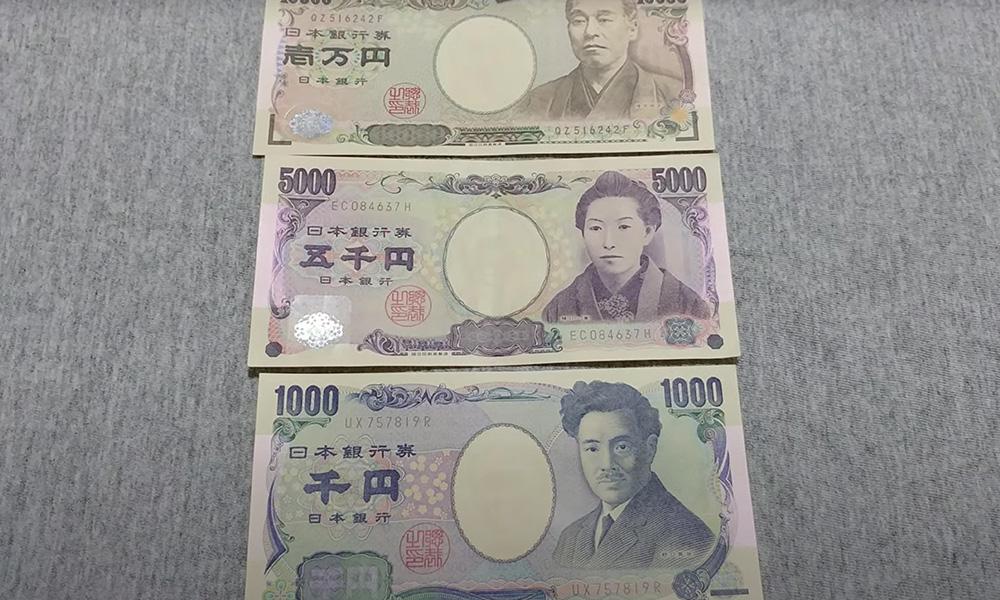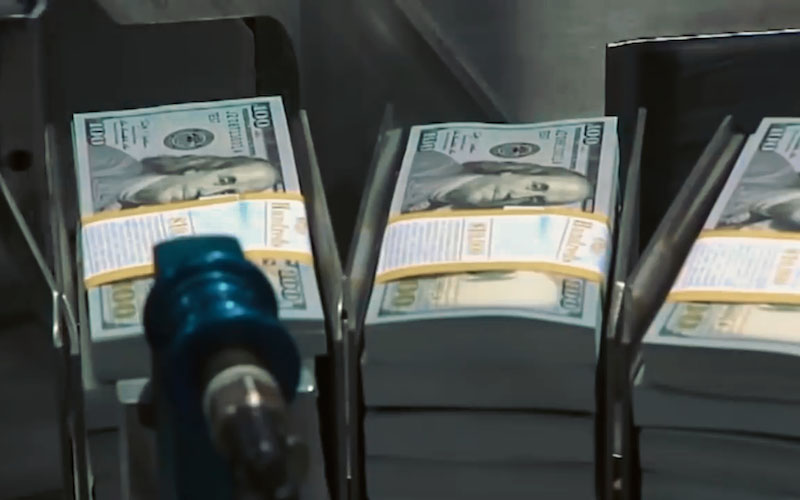Why did USD/JPY suddenly fall to around 152?
2025-10-28 20:43:14

Fundamental analysis: Dual pressures are pushing down USD/JPY
First, the buying of the yen did not appear out of thin air, but was driven by both signals of improved external relations and internal policy expectations.
On the one hand, Japan emphasized strengthening economic cooperation with the United States and announced a $550 billion overseas investment plan targeting real sectors such as energy, electricity, and infrastructure. The market interpreted this as not simply a foreign policy initiative, but rather a long-term commitment that ties foreign and industrial policies together, with the subtext being "stable relations and stable industrial chain migration." This narrative should alleviate concerns about Japan's export outlook and undermine the old logic that "a very weak yen is necessary to maintain export competitiveness," thereby marginally supporting the yen.
Meanwhile, the US President publicly affirmed his relationship with Japan's new Prime Minister, emphasizing that "US-Japan friendship is very strong." This high-profile, public political endorsement is often interpreted by the foreign exchange market as a signal of a declining "geopolitical risk discount." Once this discount declines, the role of safe-haven currencies (traditionally including the Japanese yen and Swiss franc) shifts slightly, allowing funds to flow more confidently directly into the yen itself, rather than solely into the US dollar. This repricing was clearly evident in today's market: the USD/JPY exchange rate plummeted to around 152.
The second pressure comes from the US dollar itself. The Federal Reserve will announce its interest rate decision on Wednesday, and the prevailing market expectation remains that the rate-cutting cycle will continue, with the Fed continuing its easing policy path over the next few meetings. This expectation of "looser" policy is already factored into the US dollar price. The US dollar index is currently trading around 98.70, down about 0.15% from its intraday high and nearing its recent low. A weaker US dollar index, absent sudden risk-off factors, typically drives down the USD/JPY exchange rate.
Another point of note: domestic policy noise is growing in the United States. The US President publicly singled out the Federal Reserve Chairman as "incompetent" and hinted that he might be replaced within a few months. He also stated that senior finance officials are reluctant to join the Fed. The most direct consequence of this rhetoric on the foreign exchange market is not who is right or wrong, but rather the weakening of policy predictability. Reduced policy predictability, increased uncertainty about the path of US interest rates, and a reduction in the dollar's "safety premium." This also weakens the upward momentum of the USD/JPY.
In contrast, the focus on the yen has shifted to the Bank of Japan. The Bank of Japan will announce its latest policy decision on Thursday, and the prevailing market consensus remains that the meeting will likely remain on hold, with the benchmark interest rate maintained at 0.5%. However, the real catalyst for market pricing isn't the "hold" statement itself, but the phrase that follows: Traders are beginning to bet on a roughly 38% probability of a 25 basis point rate hike by the Bank of Japan in December. This suggests that the foreign exchange market is pricing in a future for the yen that "perhaps gradually normalizes." This is why, given the perceived continued easing of the Federal Reserve and the potential tightening of the Bank of Japan, the USD/JPY's retreat from a high of 153.25 to around 152 is unsurprising and a normal reaction to a slight reduction in the carry trade.
Technical aspects:
Judging from the hourly candlestick chart, USD/JPY experienced a round of highs and lows in the latter part of October: the upper 153.252 line is the recent high point, and then it has been declining along an obvious downward trend line. The trend line connects the multiple negative line low points in the high-level decline stage, and has the typical characteristics of a downward trend line.
During its downward trend, the exchange rate briefly broke through the 152.600 level and quickly fell to a low of 151.757. Subsequently, the USD/JPY pair did not continue its downward trend, instead forming a rectangular consolidation zone between 151.75 and 152.10, a typical consolidation/box formation. This box indicates that bears have completed the first wave of a "heavy-volume decline" in the very short term, but bulls are still able to hold their ground near the 152 level for the time being, as both sides await the next catalyst (the Bank of Japan or the Federal Reserve).

Indicators also confirm the characteristic of "sideways movement after a sharp drop." The MACD indicator (26, 12, 9) currently has a DIFF of -0.249, a DEA of -0.208, and a MACD histogram of -0.084. Overall, these indicators remain below the zero axis, indicating that momentum remains in favor of the bears. However, the negative value of the histogram is narrowing, indicating that the marginal strength of the bearish momentum is slowing rather than continuing to grow. In other words, the short-selling force remains, but it no longer has the explosive power it initially had.
The Relative Strength Index (RSI) (14) is currently around 38.074, still in a relatively low range. The 38 level is not extremely oversold, but it clearly tells us that the USD/JPY is still operating in a weak range, and the short-term rebound is more like a technical rebound than a trend reversal. Only when the RSI rises back above the central axis and the price can return to above 152.600 and complete the backtest, will this rebound be more likely to be recognized by the market as an "effective correction" rather than a "dead cat bounce."
From a price perspective, the 152.600 level remains the primary resistance level. This level served as both previous support and a high-volume trading area within the October downtrend, a typical example of "support-turned-resistance." Downward pressure is focused on the 151.757 low, currently acting as a short-term support/defense level. If this support line is broken and confirmed, USD/JPY will face a renewed downward move, prompting market discussion of the possibility of a move to 151.50 or even lower.
Simply put, the technical picture isn't a reversal, but rather a breather after the decline: the downtrend line remains a drag on prices, the MACD remains negative, and the RSI remains weak. The range suggests the market is taking short profits and awaiting signals from the central bank. The technical analysis suggests that the primary trend for USD/JPY remains downward. Unless prices can re-establish support at 152.600 and break above the downtrend line, any rebound will be a correction, not a renewed uptrend.
Market Sentiment Observation: The Mentality Switches from “Interest Rate Logic” to “Central Bank Gambling”
Market sentiment is shifting from a one-sided carry trade to a model of central bank speculation and policy noise. In the past, the USD/JPY rally largely relied on the following logic: the Federal Reserve maintained high interest rates, the Bank of Japan was extremely accommodative, and the widening interest rate differential led to carry trades favoring long-term USD/JPY positions. This logic still exists, but it is being diluted by two developments.
First, the market has begun to seriously price in the probability of a subsequent Bank of Japan rate hike: the implied probability of a 25 basis point increase in December has risen to approximately 38%. This means the potential cost of carry trades has risen, and the appeal of carry trades is no longer as simple as "holding long-term and reaping the interest rate differential." This psychological shift itself represents a turning point in sentiment.
Second, the Fed's path is being politically distorted. Once its policy path is perceived as driven by domestic political wrangling rather than solely by inflation and employment data, the Fed's authority, independence, and forward guidance will be discounted by the market. Once the Fed is discounted, the dollar's role as an anchor for global liquidity will also be discounted, reducing its "safety premium," making the market more willing to close long dollar positions at high levels.
- Risk Warning and Disclaimer
- The market involves risk, and trading may not be suitable for all investors. This article is for reference only and does not constitute personal investment advice, nor does it take into account certain users’ specific investment objectives, financial situation, or other needs. Any investment decisions made based on this information are at your own risk.





















